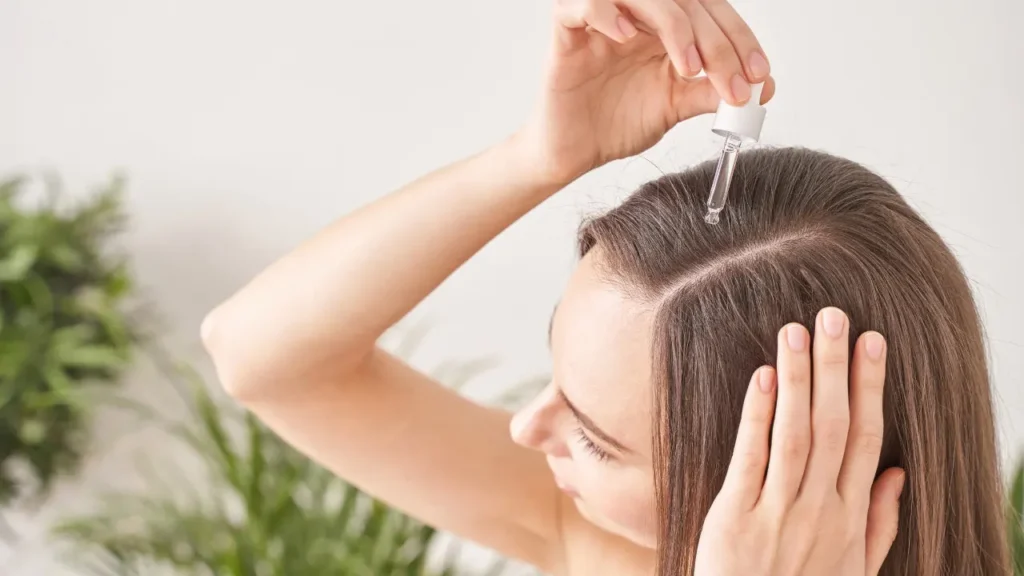Description
Millions of individuals worldwide are afflicted by seborrheic dermatitis, a non-contagious inflammatory dermatological disorder. Sebaceous gland-rich regions like the face, scalp, and chest constitute the main affected areas. Symptoms of seborrheic dermatitis include red, oily, scaly spots that may also itch and become inflamed. Dandruff on the head, brows, nasolabial creases, and the middle of the chest are typical sites of involvement. Although the precise cause is still unknown, seborrheic dermatitis is believed to come from an association of sebaceous gland activity, genetic predisposition, and an expansion of Malassezia yeast.
You May Also Like:
ROYAL BLEND CBD GUMMIES VS PARTNERED PROCESS GUMMIES
BEYOND THE HYPE: HOW CBD CAN HELP SENIORS ENJOY A BETTER QUALITY OF LIFE
Seborrheic dermatitis: Description, Causes, And Treatment Protocol is an original (HealthXWire) article.
Possible Causes
It is unclear what exactly causes seborrheic dermatitis, a multifactorial illness. Seborrheic dermatitis is thought to be brought on by a number of reasons, though. Among these potential reasons is:
Sebaceous Gland Activity
Sebaceous gland-active body parts, like the face, scalp, and chest, are frequently affected by seborrheic dermatitis. The onset of the disorder may be influenced by overproduction of sebum or changes in sebum composition. Uncertainty exists regarding the precise pathways that connect the production of sebum to seborrheic dermatitis.
Genetic Predisposition
Seborrheic dermatitis frequents folks with a family history of the disease, suggesting that it may have a genetic component. Though the precise genes responsible are still being researched, certain genetic variants may enhance the vulnerability to the condition.
Malassezia Yeast
Seborrheic dermatitis is thought to be primarily caused by an overabundance of the yeast Malassezia affecting the skin. The majority of people have the naturally developing fungus Malassezia on their skin. Nevertheless, there is an aberrant reaction to Malassezia in those with seborrheic dermatitis, resulting in inflammation and discomfort.
Immune System Response
Seborrheic dermatitis is believed to be caused by an aberrant immunological response. The immune system of those who have the illness responds to Malassezia by causing inflammation and skin discomfort. However, further research is needed to determine the precise immunological systems implicated.
Hormonal Factors
Seborrheic dermatitis might be influenced by hormonal imbalances, including those that occur during pregnancy, puberty, or particular medical disorders. Variations in hormone levels may impact skin cell renewal, sebum production, and immunological response, potentially influencing the onset of the illness.
Emotional and Psychological Stress
Seborrheic dermatitis has been linked to psychological and emotional stressors, like anxiety and despair. Stress can impact immune system performance and can cause or exacerbate health conditions.
Environmental and Climatic Factors
Seborrheic dermatitis symptoms may be exacerbated by environmental stressors. Dry skin can result from cold climate, dry air, and decreased humidity levels; on the other hand, hot, humid conditions may aggravate symptoms by increasing sweating and sebum formation.
Exacerbating and Mitigating Factors
Seborrheic dermatitis growth and treatment are significantly influenced by aggravating and moderating factors. People can effectively control their diseases and avoid flare-ups by being aware of these issues. Following are some aggravating and mitigating factors for seborrheic dermatitis.
Exacerbating Factors
Malassezia Yeast Overgrowth
Seborrheic dermatitis is thought to be largely caused by the skin having an excessive amount of Malassezia yeast. Sebum is the food source for yeast, which creates metabolites that may irritate one’s skin and cause inflammation.
Stress
The immune system has been shown to be impacted by psychological stress, which may make seborrheic dermatitis symptoms worse. Techniques for reducing stress, like breathing exercises and meditation, might decrease its effects.
Hormonal Imbalances
Seborrheic dermatitis can become more severe as a result of hormonal changes that take place throughout adolescence, pregnancy, and menopause. Both sebum production and the skin’s reaction to Malassezia yeast are affected by these abnormalities.
Climate and Weather
Dry skin can result from cold, dry weather, and perspiration and sebum production can rise in hot, humid climates. Seborrheic dermatitis symptoms can be brought on or made worse by either extreme.
Skincare Items that Irritate
Seborrheic dermatitis may be aggravated by harsh detergents, soaps, and cosmetics that contain scents, colors, or other irritating components. Select soft, hypoallergenic products wisely, and stay away from irritants for lengthy periods of time.
Obesity
According to some data, seborrheic dermatitis may be more likely to occur in those who are obese.
Mitigating Factors
Proper Hygiene
Dead skin cells, excess oil, and Malassezia yeast can all be eliminated from the surface of the skin by following excellent hygiene habits, like routine washing and cleaning of the affected regions. Nevertheless, it is essential to avoid over-scrubbing or using abrasive cleaners that might aggravate the skin.
Stress Management
Seborrheic dermatitis symptoms can be less affected by stress by implementing stress-reducing strategies like meditation, exercise, and relaxation techniques.
Moisturization
Maintaining proper skin hydration can help lessen the dryness and flakiness linked to seborrheic dermatitis. To avoid further irritation, moisturizers must be non-comedogenic and free from fragrance.
Avoiding Triggering Substances
It is critical to recognize and stay away from things that cause seborrheic dermatitis or make it worse. These could include particular meals like alcohol and spicy food, environmental allergies, and irritating substances like chlorine and specific metals.
Regular Medical Checkups
A chronic disorder, seborrheic dermatitis may need continuing care. Routine dermatologist follow-up appointments can guarantee proper treatment adjustments and prompt intervention for any aggravations.
Sun Protection
Sunlight can make seborrheic dermatitis symptoms worse, making it crucial to protect the skin from too much sun exposure. It is advised to seek shade during the hottest parts of the day and use broad-spectrum sunscreens containing a high SPF.

Standard Treatment Protocols
The following are common steps in seborrheic dermatitis treatment.
Topical Antifungal Agents
Seborrheic dermatitis is typically treated first with topical antifungal medicines. These drugs work to reduce the skin’s overgrowth associated with Malassezia yeast. Typical topical antifungal medications used include
Ketoconazole
Ketoconazole significantly lowers inflammation and inhibits yeast growth and is obtainable in a variety of formulations including shampoos, foams, and creams. Two or three times a week is usually plenty.
Selenium Sulfide
Selenium sulfide, which is frequently found in medicinal shampoos, inhibits Malassezia yeast growth on the scalp. Before rinsing, it is applied and allowed to sit on one’s scalp for a short while.
Ciclopirox
Malassezia yeast can be effectively treated with this antifungal medication, which comes in gel or cream formulations. The regions impacted receive twice-daily applications of it.
Topical Calcineurin Inhibitors
Topical calcineurin inhibitors like pimecrolimus and tacrolimus are occasionally administered for seborrheic dermatitis, particularly in delicate areas like one’s face and groin. These support immune response modulation and inflammation reduction.
Topical Corticosteroids
Seborrheic dermatitis-related irritation and swelling are both reduced by corticosteroids. They come in a variety of formulations and strengths, comprising lotions, ointments, creams, and foams.
Medicated Shampoos
Seborrheic dermatitis of the scalp can be successfully treated with shampoos containing particular active components. Common choices include:
Coal Tar
Coal tar shampoos aid in reducing seborrheic dermatitis symptoms by slowing the proliferation of skin cells. They usually get utilized once or twice per week.
Zinc Pyrithione
The use of these shampoos can lower inflammation and regulate yeast development. Between two and three times per week is the typical usage.
Oral Antifungal Medications
Oral antifungal medicines may be recommended for serious or refractory instances. These systemic medications, like itraconazole or fluconazole, aid in regulating yeast development all over the body. They are normally saved for situations where topical therapies have failed.


Treatment Options
Natural Remedies
As alternative treatments for seborrheic dermatitis, certain herbal remedies might provide further relief. These comprise of solutions like:
Tea Tree Oil
Applying diluted tea tree oil topically offers antifungal and anti-inflammatory qualities that could aid with symptoms. Tea tree oil ought not to be applied undiluted because it can irritate the skin.
Aloe Vera Gel
With its calming and anti-inflammatory qualities, aloe vera gel can ease the itching and irritation brought on by seborrheic dermatitis.
Colloidal Oatmeal
Itchy skin can be soothed and reduced by utilizing oatmeal-based items or putting colloidal oatmeal in bathwater.
Nutritional Supplements
Seborrheic dermatitis might benefit from taking specific nutritional supplements. These comprise:
Vitamin D
The immunomodulatory properties of vitamin D have made supplementation promising. Before beginning any supplements, people should speak with a healthcare provider.
Omega-3 Fatty Acids
Omega-3 fatty acids are included in flaxseed oil or fish oil and have anti-inflammatory effects, which may help lessen inflammation related to the disorder.
Lifestyle Modifications
Seborrheic dermatitis can be controlled by making certain lifestyle changes.
Stress Management
Adopting stress-reduction methods including meditation, exercise, and relaxation techniques can assist lessen the effects of stress affecting the indications of seborrheic dermatitis.
Proper Hygiene
Excessive oil, yeast, and flakes can be eliminated by routinely and gently cleaning the affected regions. Although it can make inflammation worse, excessive cleaning must be avoided.
Avoiding Triggers
A flare-up might be avoided by recognizing and avoiding triggers like harsh skincare items, particular diets, and environmental allergies.
However, when deciding on the best course of therapy and supplemental medicines for a certain instance of seborrheic dermatitis, it is crucial to visit a dermatologist or other healthcare professional. Depending on the condition’s severity, a person’s requirements, medical history, and other factors, they can offer tailored advice.


Conclusion
Seborrheic dermatitis is a common skin problem that can affect anyone, regardless of their age or background. While factors like a family history of the condition, oily skin, or a weakened immune system can make you more likely to get it, it’s essential to know that anyone can develop seborrheic dermatitis.
Living with this condition can be tough, but it’s important to remember that it doesn’t define who you are. With proper care and treatment, such as those outlined above, people with seborrheic dermatitis can maintain normalcy and comfortability. Focus on taking care of your skin, eating healthily, and getting support from medical professionals or support groups for guidance.


Additional resources for further reference
https://www.aad.org/public/diseases/a-z/seborrheic-dermatitis-overview
https://www.healthline.com/health/skin/seborrheic-dermatitis
Important Note: The information contained in this article is for general informational purposes only, and should not be construed as health or medical advice, nor is it intended to diagnose, prevent, treat, or cure any disease or health condition. Before embarking on any diet, fitness regimen, or program of nutritional supplementation, it is advisable to consult your healthcare professional in order to determine its safety and probable efficacy in terms of your individual state of health.
Regarding Nutritional Supplements Or Other Non-Prescription Health Products: If any nutritional supplements or other non-prescription health products are mentioned in the foregoing article, any claims or statements made about them have not been evaluated by the U.S. Food and Drug Administration, and such nutritional supplements or other health products are not intended to diagnose, treat, cure, or prevent any disease.
Table of Contents


